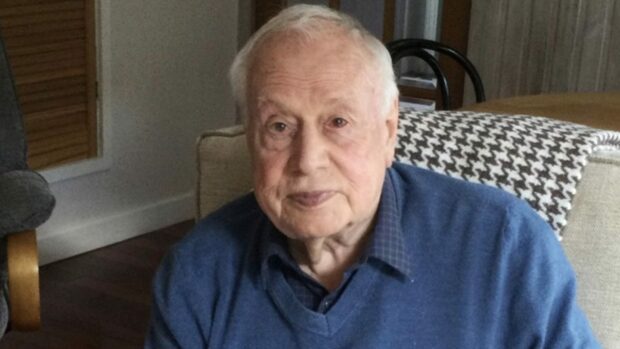Tom Nairn, the Fifer who articulated a vision for Scottish independence from the 1970s onwards has died aged 90.
He was credited with shaping the independence movement after the publication of his 1977 work, The Break-up of Britain.
However, Tom, who hailed from Freuchie always cautioned that leaving the UK would only be the start of Scotland’s journey.
It would then have to weigh up what sovereignty meant and find its place in the world.
An academic and political theorist, Tom chartered Scotland’s journey from what he saw as the rubble of a crumbling British Empire.
Political tension
Although central to the independence movement, Tom was rarely collegiate with the Scottish National Party for whom he expressed disdain in the past.
He was born in 1932 in Freuchie, the son of a primary school teacher and his wife.
Later, part of his childhood was spent living near the beach in Cellardyke, which he described as idyllic.
When his father took up a headteacher’s post, the family had to move to West Fife.
Tom was educated at Dunfermline High School, then began studying at Edinburgh College of Art before switching to a philosophy course at Edinburgh University.
He continued his studies at Oxford University’s Oriel College where one of his lecturers was Iris Murdoch, the novelist.
Italy
After a scholarship in Pisa, where he became acquainted with both the Italian language and Marxism, he went on to study in France.
On his return to the UK, Tom began lecturing at Birmingham University and then Hornsey college of Art in London.
During the 1980s he returned to the East Neuk to look after his wife, Christine, who suffered from multiple sclerosis.
He worked from home as best he could and nursed Christine until her death in 1992.
Thereafter, he spent a year working with philosopher Ernest Gellner at the Central European University created by George Soros in Prague.
Referendum
Tom returned to academia in 1995 and, less than 20 years later, witnessed the 2014 referendum.
The outcome did not aggrieve him greatly, rather he saw the vote itself as establishing Scotland’s right to vote to leave the UK at a future time.
First Minister Nicola Sturgeon paid tribute to Tom Nairn. “He was one of the greatest thinkers, political theorists and intellectuals that Scotland has ever produced – and certainly one of the leading and most respected voices of civic nationalism. My condolences to his loved ones.”
Former Prime Minister and fellow Fifer Gordon Brown said: “I am sad to hear of the death of Tom Nairn. A great writer, thinker, intellectual and good man. He disagreed with me on many things but his books and scholarship will long be remembered. My thoughts are with Millicent and family.”
Former First Minister Alex Salmond, who led the 2014 independence drive said: “Tom Nairn’s international reach has been huge but his scholarship was vital in providing the intellectual base which turned Scottish nationalism from a romantic notion to a powerful left-wing challenge to the British state.”
He is survived by his partner Millicent and children Rachel and Greig.

Conversation